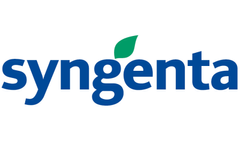Late Corn Better Than Blighted Articles & Analysis: Older
10 news found
On August 20, 2020, the U.S. Environmental Protection Agency (EPA) announced that it is seeking to add chitosan to the list of active ingredients allowed for in minimum risk pesticides exempted from pesticide registration requirements under Federal Insecticide, Fungicide, and Rodenticide Act (FIFRA) Section 25(b). A minimum risk product must meet six specific conditions to be exempted from ...
Wageningen University & Research and Agrifirm have cooperated in the development of a new Phytophthora advisory App which has recently been made available to growers on the Akkerweb platform. WUR supplied the new computation module and Agrifirm the interface for the new App. The development of the App was in part funded by PPS PL2.0 (Precision Farming 2.0). Following tests of the new App ...
“If they replanted soon, it would probably be much better than to have a poor stand,” said Peter Thomison, an agronomist with Ohio State University Extension, the outreach arm of the College of Food, Agricultural, and Environmental Sciences. Growers can’t be certain that the plants that survived will be consistently healthy or remain viable if ...
A conference for fruit and vegetable growers is set for Feb. 7 at the Oasis Conference Center, 902 Loveland-Miamiville Road in Loveland. The Southwestern Ohio Specialty Crop Conference offers “a little something for everyone,” said Greg Meyer, Ohio State University Extension educator in Warren County and event organizer. The conference is sponsored by OSU Extension, the outreach arm ...
New chemistry complements Syngenta’s market-leading fungicide portfolio First sales in the 2016 season; peak sales potential of more than $150 million Latest launch from Syngenta’s $3.6 billion crop protection pipeline Syngenta announced today that it has received US EPA approval for ORONDIS™ a new high-performance fungicide. First sales are expected in the 2016 season. ...
BySyngenta
Growing crops with stacks of two or more resistance genes from closely related species, introduced into the crop via for instance genetic engineering, combined with the simultaneous introduction of resistance management, can ensure the long-term resistance of these plants to economically significant and aggressive diseases. The combination offers opportunities to make agriculture more sustainable ...
In this week 'Nature Plants', scientists from Wageningen University, The Netherlands, and The Sainsbury Laboratory in Norwich, UK, report the identification of a resistance gene that enhances resistance against potato late blight from a South American wild relative of cultivated potatoes. The gene targets elicitin, a conserved protein with an important biological function, making it less likely ...
Raising China potato production is of utmost importance. In the coming years a great effort is to be made to meet the increasing demand of potatoes for fresh consumption and for industry. In a joined R&D program Chinese and Dutch research institutes and companies investigated opportunities for improvement on the main topics of potato production. ‘Progress Report China Potato GAP ...
A University of Florida scientist has pinpointed Mexico as the origin of the pathogen that caused the 1840s Irish Potato Famine, a finding that may help researchers solve the $6 billion-a-year disease that continues to evolve and torment potato and tomato growers around the world. A disease called “late blight” killed most of Ireland’s potatoes, while today it costs Florida ...
DAVIS, Calif., Jan. 18, 2012 /PRNewswire/ -- Marrone Bio Innovations today announced that the U.S. Environmental Protection Agency has approved a significant label expansion for Regalia®, a biofungicide that boosts plants' natural defenses to fight fungal and bacterial diseases. The label expansion includes new soil applications, instructions for yield improvement in corn and soybeans, ...




